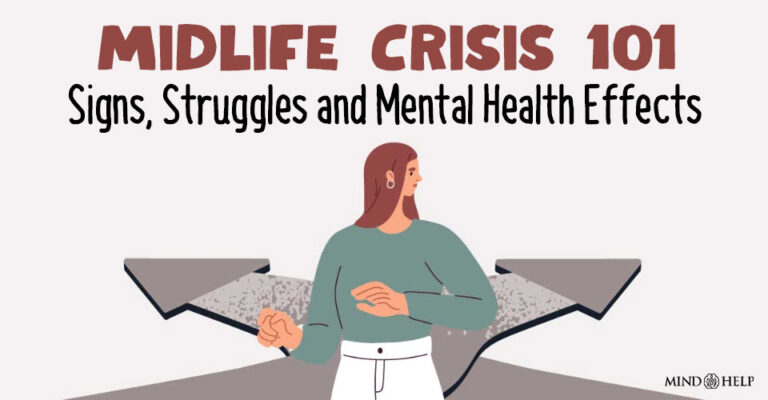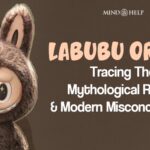The Diagnostic and Statistical Manual of Mental Disorders, fifth edition (DSM 5), is a diagnostic manual, developed by the American Psychiatric Association (APA), used to diagnose mental disorders.
What Is DSM 5?
The DSM 5 is the current edition of the Diagnostic and Statistical Manual of Mental Disorders. Dr. Dilip Jeste, the then President of the American Psychiatric Association (APA) released the fifth edition on May 18, 2013, at the 166th Annual Meeting of the APA at San Francisco. The DSM has been revised seven times since it was first published in 1952.
It provides the standard language by which clinicians, researchers, and public health officials diagnose mental disorders. This is the first DSM that used the Arabic numeral instead of a Roman numeral in its title. It contains all the descriptions, symptoms, and diagnostic criteria that are necessary for diagnosing mental health disorders. It also includes the statistics and treatment options for the disorders.
The DSM 5 includes dimensional aspects of diagnosis along with categories. However, diagnosis is still largely dependent on the use of specifiers, a yes or no decision, subtypes, severity ratings, and cross-cutting symptoms. This helps the clinicians to better understand the disorder that may be otherwise hindered by following a strict categorical approach. The DSM 5 was created to address the limitations in the DSM IV and also involved the integration of the latest scientific and clinical evidence on the empirical basis of psychiatric disorders. The goal was to ensure the best care of patients and improve the usability for clinicians and researchers.
Read More About DSM Here
Division Of DSM 5
DSM 5 does not have the ultimate word in the classification of mental disorders. Dr. Dilip Jeste stated that the goal of the fifth edition is to help clinicians make more accurate diagnoses and improve patient outcomes. Initially, workgroups were formed to create a research agenda for the revision of the fifth edition. These groups produced several white papers, monographs, and journal articles.
The DSM 5 Task Force consisted of 27 members that included a chair and vice-chair. The Task Force represented research scientists from psychiatry and other disciplines, clinical care providers, and consumer and family advocates. The DSM 5 was a combined effort of 400 experts from 13 countries, representing the disciplines of psychiatry, psychology, neurology, pediatrics, primary care, epidemiology, research methodology, and statistics.
The Diagnostic and Statistical Manual of Mental Disorders, fifth edition is a 947-page manual, divided into three sections and an appendix. They are as follows:
A. Section I
In this section, the chapter 1 Vahia V. N. (2013). Diagnostic and statistical manual of mental disorders 5: A quick glance. Indian journal of psychiatry, 55(3), 220–223. https://doi.org/10.4103/0019-5545.117131 that includes “disorders usually first diagnosed in infancy, childhood or adolescence” was deleted. The introductory section of the manual describes the revision process of DSM that includes field trials, public and professional review, and expert review. It is also stated that its goal is to harmonize with the ICD (International Classification of Diseases) systems. The DSM 5 also replaced the NOS (Not Otherwise Specified) categories with two options:
1. Other specified disorder
It allows the clinician to specify the reason that the criteria are not met for a specific disorder.
2. Unspecified disorder
It allows the clinician the option to abstain from the specification.
The fifth edition also discarded the multiaxial system of diagnosis and added all the disorders in section II.
B. Section II
Section II of the manual lists diagnostic criteria and codes of 22 diagnostic criteria for all mental disorders. They are as follows:
- Neurodevelopmental disorders
- Schizophrenia spectrum and other psychotic disorders
- Bipolar and related disorders
- Depressive disorders
- Anxiety disorders
- Obsessive-compulsive related disorders
- Trauma and stressor-related disorders
- Dissociative disorders
- Somatic symptom and related disorders
- Feeding and eating disorders
- Elimination disorders
- Sleep-wake disorders
- Sexual dysfunctions
- Gender dysphoria
- Disruptive, impulse control, and conduct disorders
- Substance-related and addictive disorders
- Neurocognitive disorders
- Personality disorders
- Paraphilic disorders
- Other mental disorders
Read more About Generalized Anxiety Disorder Here
C. Section III
This section contains the emerging measures and models. It also contains a list of conditions that require further research on the modified classification system. It also covers the following:
- Cross-cutting symptom measures for adults, children, and adolescents between age 6 to 17 years
- World Health Organisation (WHO) Disability Assessment Schedule 2
- Alternative DSM 5 model for personality disorders
Changes In The DSM 5
The fifth edition had several changes after its amendment. Some of the changes are:
- The term “Mental retardation” was replaced with “intellectual disability” under neurodevelopmental disorders
- Removal of subtypes of schizophrenia under schizophrenia spectrum and other psychotic disorders
- Removal of bereavement from depressive disorders
- The premenstrual dysphoric disorder was categorized as a disorder and added as a condition for further study
- The panic attack became a specifier under anxiety disorders
- Addition of four new disorders namely excoriation disorder, hoarding disorder, substance/medication-induced obsessive-compulsive and related disorder, and obsessive-compulsive and related disorder due to the medical condition under obsessive-compulsive and related disorders.
- The term “depersonalization disorder” was replaced with “depersonalization/derealisation disorder”
- Removal of “sexual aversion disorder” under sexual dysfunctions
- Removal of “jet lag” under sleep-wake disorders
- Panic disorder and agoraphobia became two separate disorders
- New disruptive mood dysregulation disorder for children up to age 18 years
- The term “dysthymia” also known as persistent depressive disorder
Impact Of DSM 5 Changes
The fifth edition 2 Regier DA, Kuhl EA, Kupfer DJ. The DSM-5: Classification and criteria changes. World Psychiatry. 2013 Jun;12(2):92-8. doi: 10.1002/wps.20050. PMID: 23737408; PMCID: PMC3683251. marks the first significant revision of the publication since the DSM IV in 1994. The changes were extensively influenced by advancements in neuroscience, clinical and public health needs, and identified issues with the classification system and criteria for DSM IV. Changes in the fifth edition have a significant impact on the diagnostic instruments used to assess the presence of mental disorders.















